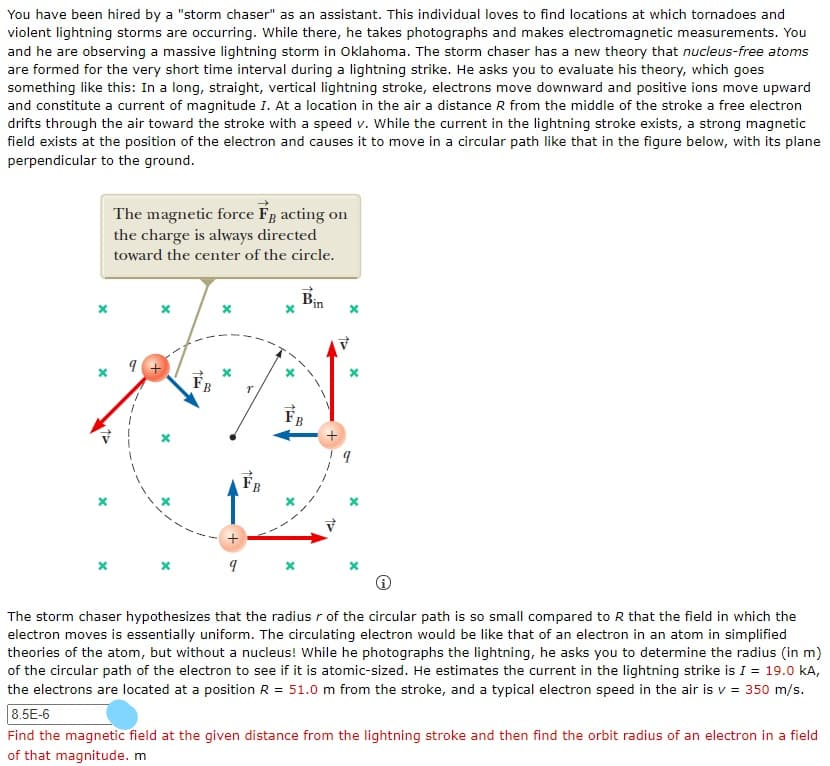You have been hired by a "storm chaser" as an assistant. This individual loves to find locations at which tornadoes and violent lightning storms are occurring. While there, he takes photographs and makes electromagnetic measurements. You and he are observing a massive lightning storm in Oklahoma. The storm chaser has a new theory that nucleus-free atoms are formed for the very short time interval during a lightning strike. He asks you to evaluate his theory, which goes something like this: In a long, straight, vertical lightning stroke, electrons move downward and positive ions move upward and constitute a current of magnitude I. At a location in the air a distance R from the middle of the stroke a free electron drifts through the air toward the stroke with a speed v. While the current in the lightning stroke exists, a strong magnetic field exists at the position of the electron and causes it to move in a circular path like that in the figure below, with its plane perpendicular to the ground. The magnetic force Fg acting on the charge is always directed toward the center of the circle. Bin + The storm chaser hypothesizes that the radius r of the circular path is so small compared to R that the field in which the electron moves is essentially uniform. The circulating electron would be like that of an electron in an atom in simplified theories of the atom, but without a nucleus! While he photographs the lightning, he asks you to determine the radius (in m) of the circular path of the electron to see if it is atomic-sized. He estimates the current in the lightning strike is I = 19.0 kA, the electrons are located at a position R = 51.0 m from the stroke, and a typical electron speed in the air is v = 350 m/s. 8.5E-6 Find the magnetic fiold at the given distance from the lightning stroke and tben find the orbit radius of an olectron in a fiold
Nuclear Fusion
Nuclear fusion is a type of nuclear reaction. In nuclear fusion, two or more than two lighter atomic nuclei combine to form a heavier nucleus. During this process, an enormous amount of energy is released. This energy is called nuclear energy. Nuclear fusion is the energy source of the sun and stars.
Fusion Bomb
A fusion bomb is also known as a thermonuclear bomb or hydrogen bomb which releases a large amount of explosive energy during a nuclear chain reaction when the lighter nuclei in it, combine to form heavier nuclei, and a large amount of radiation is released. It is an uncontrolled, self-sustaining nuclear chain reaction where isotopes of hydrogen combine under very high temperature to form helium. They work on the principle of operation of atomic fusion. The isotopes of Hydrogen are deuterium and tritium, where they combine their masses and have greater mass than the product nuclei, get heated at high temperatures, and releases energy.

Trending now
This is a popular solution!
Step by step
Solved in 2 steps






